Few countries have used fabric as a tool to achieve freedom. And that’s the reason why nearly seven decades after India gained its hard-won independence, khadi continues to inspire and amaze people around the globe.
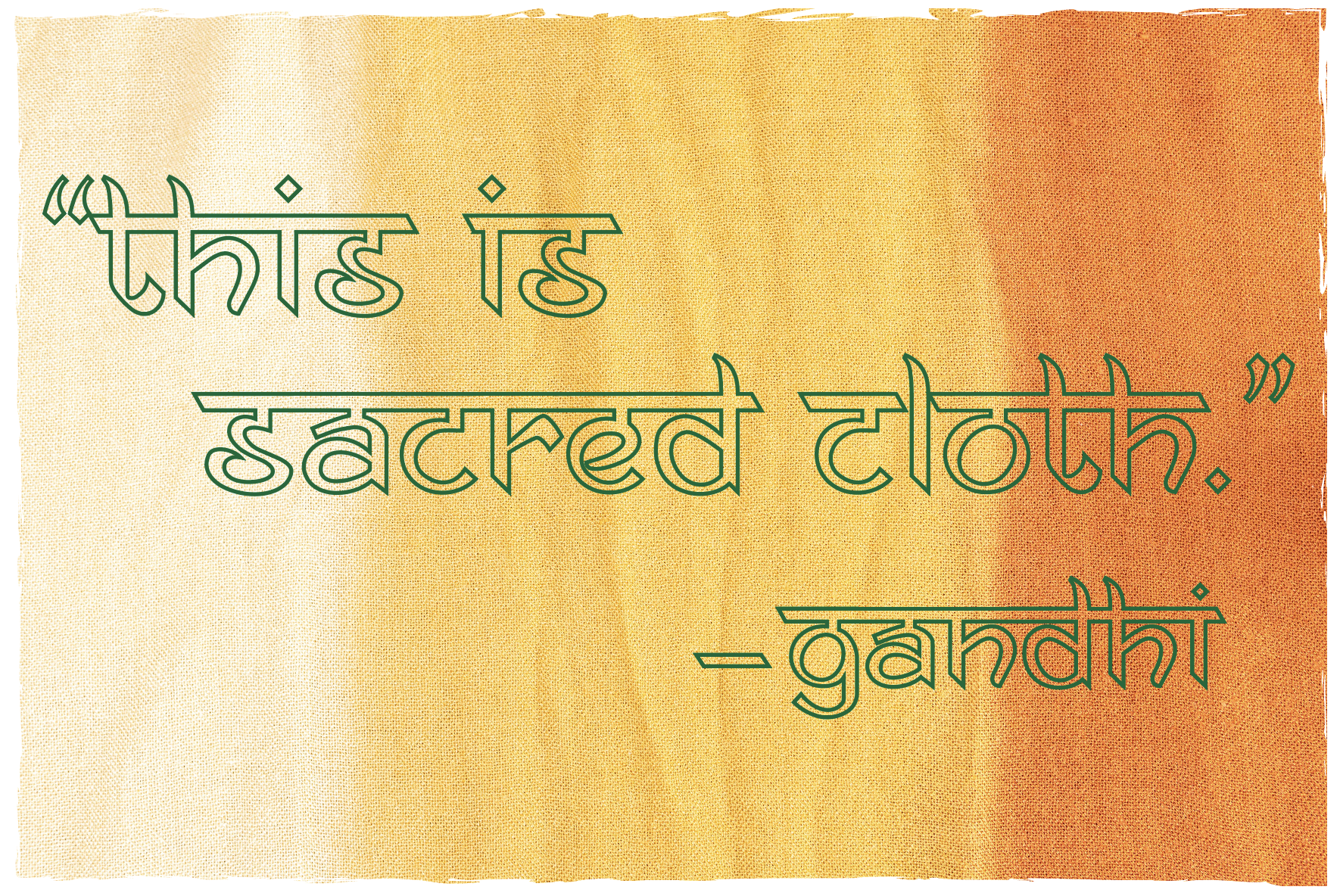
By law, the Indian flag is to be made of khadi, a special type of hand-spun cloth, made popular by Mahatma Gandhi.
A fabric that embodies a worldview of the past as well as of the future, khadi is a symbol of Indian textile heritage.
The word itself is derived from ‘khaddar’, a term for handspun fabric in India, Bangladesh, and Pakistan. While khadi is usually manufactured from cotton, contrary to popular belief, it is also made from silk and woolen yarn (called khadi silk and khadi wool respectively).
Khadi was launched in 1920 as a political weapon in the Swadeshi movement of Mahatma Gandhi.
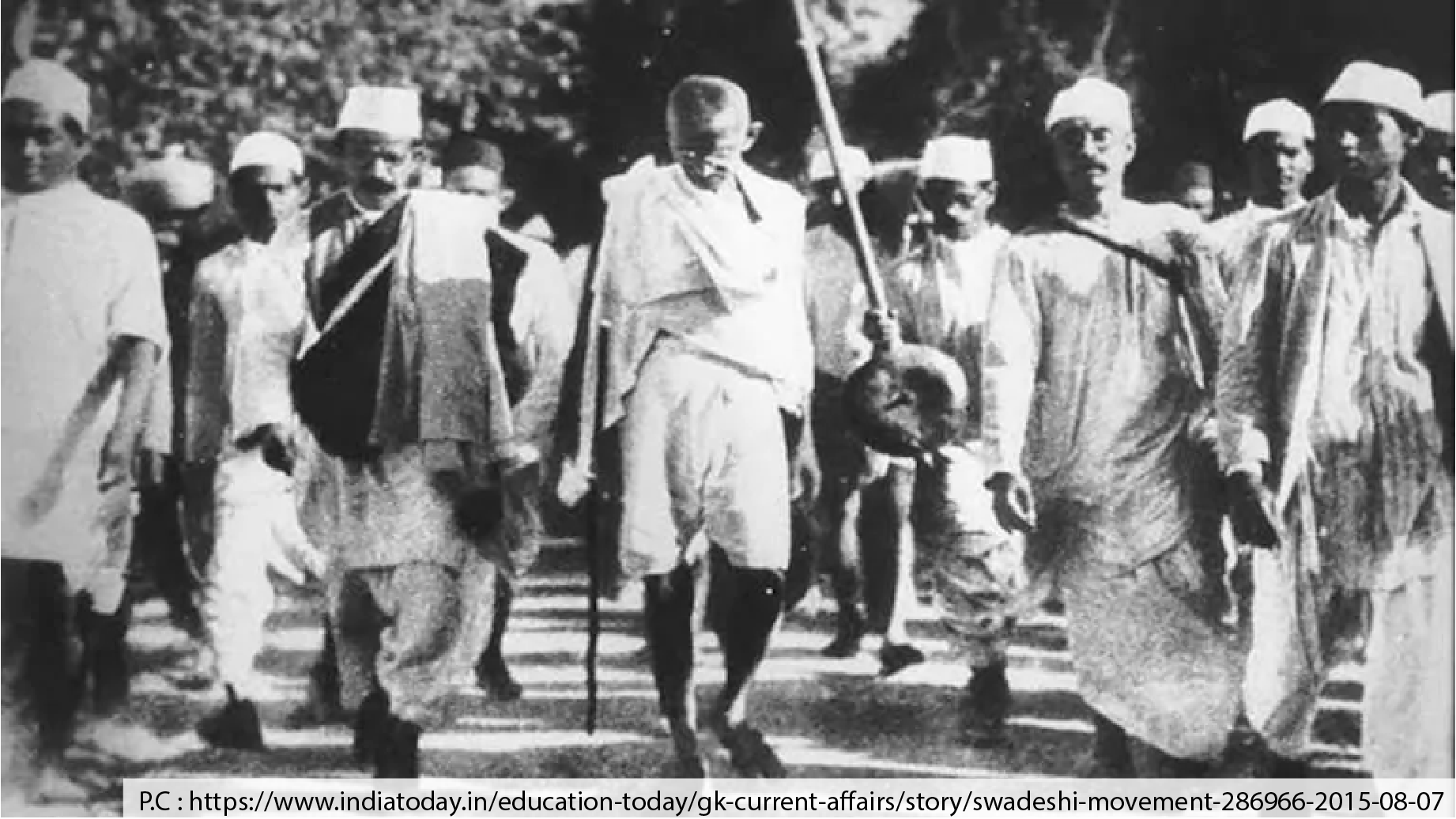
The terms khadi, cotton, and handloom were used interchangeably in my home and while shopping for clothes, we would trust the seller with the expertise on the topic.
So, let us begin with what is the distinction between khadi, handloom, and mill cloth.
Traditionally, khadi cloth is the fabric that makes use of no external power for the machinery. Right from the harvesting of the cotton to the removal of seeds, separating the fibers to spinning, dyeing, and weaving, everything is done manually. Of course, with time, government agencies have altered the definition of the fabric but broadly, it means the cloth that is hand-spun and hand-woven.
While Khadi is both handspun and handwoven, a handloom cloth is a fabric created using two steps, one manually and the other with a machine with the use of either electricity, battery, or fuel. It can be handspun and mill-woven or mill-spun and handwoven. Generally, it is the latter because spinning cotton is labor-intensive and time-consuming. When both the steps are powered by machines, the result is a mill cloth that is both easy to manufacture and uniform in its texture. This makes its price considerably low.
These fabrics are made of either cotton, silk, or wool or a combination of any two or all three. The above definitions for the fabrics remain true with all three raw materials.
By the end of the 17th century, East India Company was importing around a quarter of million pieces of khadi to Britain from India, these numbers are just breathtaking! An increase in the production of low-cost mill fabric spurred the demand for raw cotton which was all because of industrialization. East India Company encouraged cotton farming and mill-produced fabrics which decreased the demand and supply of khadi. This was also known as the dark phase for khadi.
Mahatma Gandhi resuscitated Khadi as a symbol of nationalism, self-reliance, equality, and rebellion during the country’s struggle for independence from the British in the first half of the 20th century.
The spinning wheel which used to be a symbol of poverty and backwardness rose to symbolize self-sustenance and non-violence and went on to play a special role in the Freedom Movement of India.
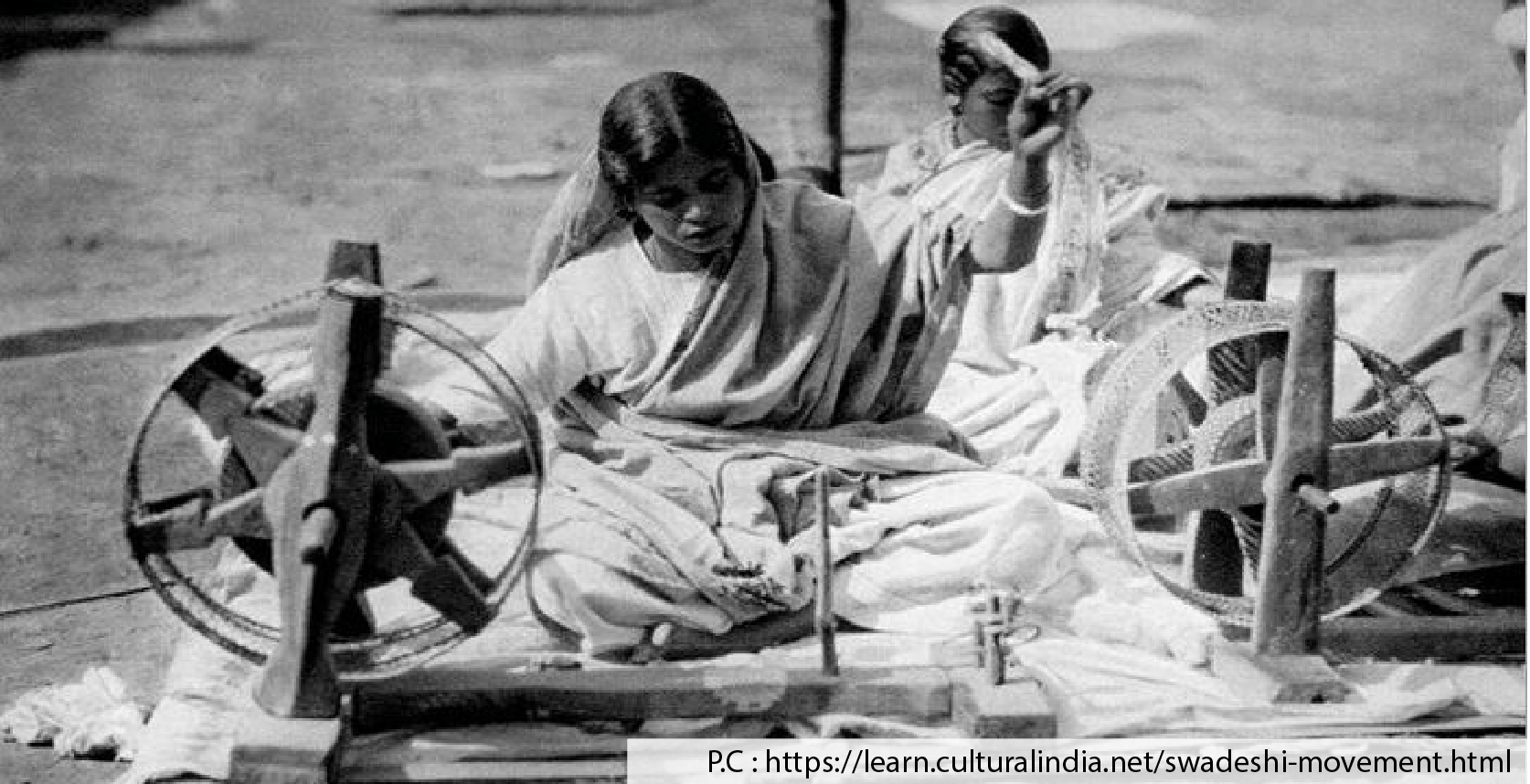
Today Khadi has evolved from a symbol of freedom struggle to a sustainable fashion staple.
Khadi is an eco-friendly fabric with the potential to feel comfortable and can be worn in any season. After all, comfort is what we crave now when it comes to fashion!
In independent India, as the cottage industries are reborn, there is a growing divide in the hierarchy between the profitable “creatives” and the “skilled” weavers.
Has this organic, eco-friendly, indigenous produce become an alien in its own land?
And are there no takers for what was once considered the poor man's fabric?
The reasons are many and equally diverse.
An Environment and eco-friendly garment, khadi is recognized as one of the coolest and most comfortable fabrics ever known. It is cool in summer and warm in winter, yet it has lost its sheen with the designers.
Designers are tastemakers who have their fingers on the pulse of the latest international as well as national trends. The designers are important for the craftsperson's survival. The new trend of the international designer has marked the degradation of textile design developing naturally over generations and influenced by the current times of the country. Instead, weavers force their design to meet foreign market pressures. The fabric no longer reflects India's current culture, but instead the needs of the West.
Today we see an influx of Western designers who dictate what the craftspeople should make, capitalizing on their low cost of labor. They then return to their home countries to sell the goods for much more than they paid. Is this ethical?
There is another fundamental divide in the handloom and khadi industry. That divide is between designer and artist. Designers create with the purpose of the function. They want to make things that have real use. Artists that use handloom and khadi weaving as their medium are following their creative bliss. They are exploring philosophical or aesthetic ideas that may not address a real need.
Again, we see that those who physically make the art remain unknown, while society celebrates the artist’s vision.
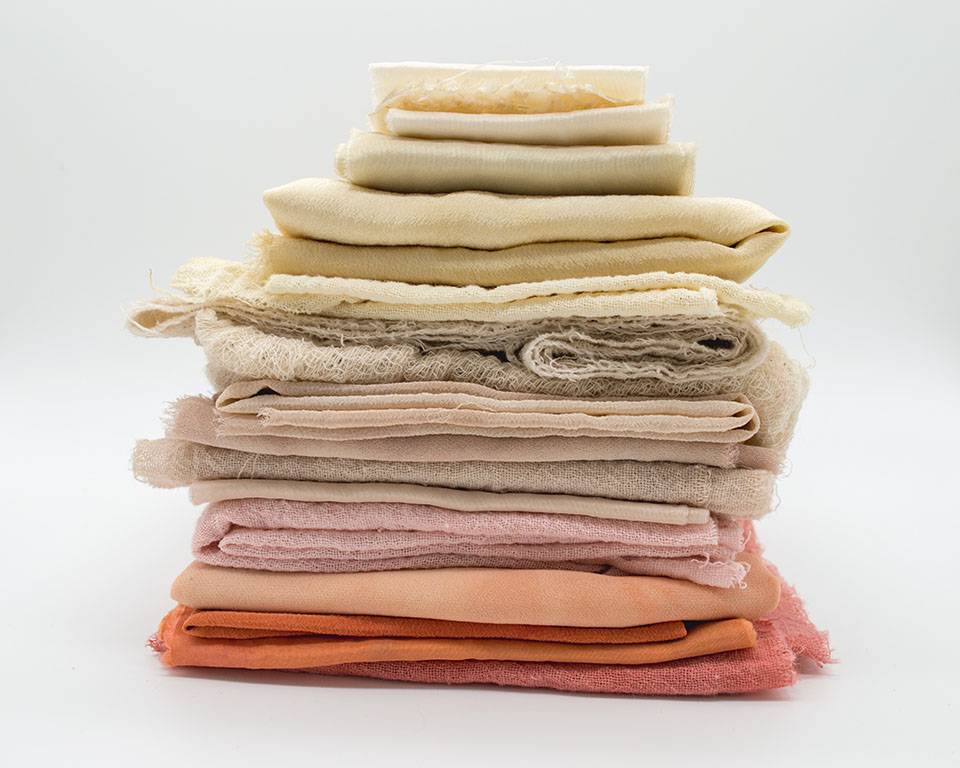
Khadi the fabric that became famous in India for uniting and creating independence is now a symbol, for some, of classism. Oscar-winning film costume designer, Bhanu Athaiya, famously dressed Richard Attenborough for the 1982 film, Gandhi, in Khadi clothing. She also used the handspun fabric for the 2001 period film, Lagaan, keeping things true to reality.
Prime Minister Narendra Modi has also been a strong campaigner with his slogan,
“Azaadi Se Pehle, Khadi for Nation; Azaadi Ke Baad, Khadi For Fashion”.
While all over the world efforts are on to produce 100% eco-friendly textiles in an aspect of the degenerating environment, where even the cotton will be grown without chemical fertilizers. However, amazingly, this is already being done in India in the form of Ponduru Khadi which is produced from wild varieties of cotton found in Ponduru, Srikakulam district in Andhra Pradesh, which is in the South of India, only a few know.
The products of the khadi industry are matchless in the sense that they are one of a kind besides being truly "cottage" or "hand-spun" and "hand-woven".
However, they are "flawed" as they are not mindless creations of machines. That is why each piece of khadi is different and as such many do not mind paying for its exclusivity. It gets softer with each wash which makes it an ideal tropical fabric.
Khadi calls to mind for most Indians, the image of a robust, homespun cotton fabric that is porous, cool, and absorbent. It could easily be the fabric of choice for our scorching summers or humid monsoons, and it is also amazingly insulating in the winter chill. Less obvious to most Indians today is that khadi is the last trace of what was once the world's finest cotton spinning and weaving tradition.
Whether recognized as a cloth product, a cultural icon, or economic support, khadi derives its distinctiveness from a single textile process; hand-spinning. It is the processing of cotton fiber into yarn by human hands that bestows the fabric with its defining material character, exceptional tactile quality, and unparalleled comfort level. Repeated washing serves only to enhance these, so that the fabric assumes, over time, a texture as natural and soothing as skin.
And most important are the colors on khadi. The cotton dyes brilliantly and even bright acid colors take on a language of their own as the fibers tend to diffuse the color to look rich and earthy. The fact is that this fabric can be produced in bulk, given the right institutional and design inputs.
Being a poor man’s cloth, with a humble beginning, why is khadi more expensive than a mill-made fabric, and then why is there this impression of it being a 'poor' fabric?
By default, we all participate in the responsibility whenever we allow a skill to be lost without contributing to replace it.
So where does this leave the common man, the ordinary villager, or a small-town man who took to khadi because he took pride in wearing it? Can he afford the privilege anymore? The answer is No. For khadi which began its journey as the weave of the Indian people is now ironically out of their reach!
Today when the word eco-friendly has become the dominant word in the world and we have the most eco-friendly product in our country, it is a disgrace that we are doing nothing to promote it on an individual level.
The government should give technology inputs to the institutions producing the fabric so that they can produce fabric of a uniform quality, which arrives clean and unstained.
Lowering the cost to an average Indian's pocket would certainly make it more popular given all its unique features.
Let's try to keep our legacy alive! Jai Hind!
RELATED TOPICS:#Apparel,Sanjay Lal
Leave a comment
Our email address will not be published. Required fields are marked *




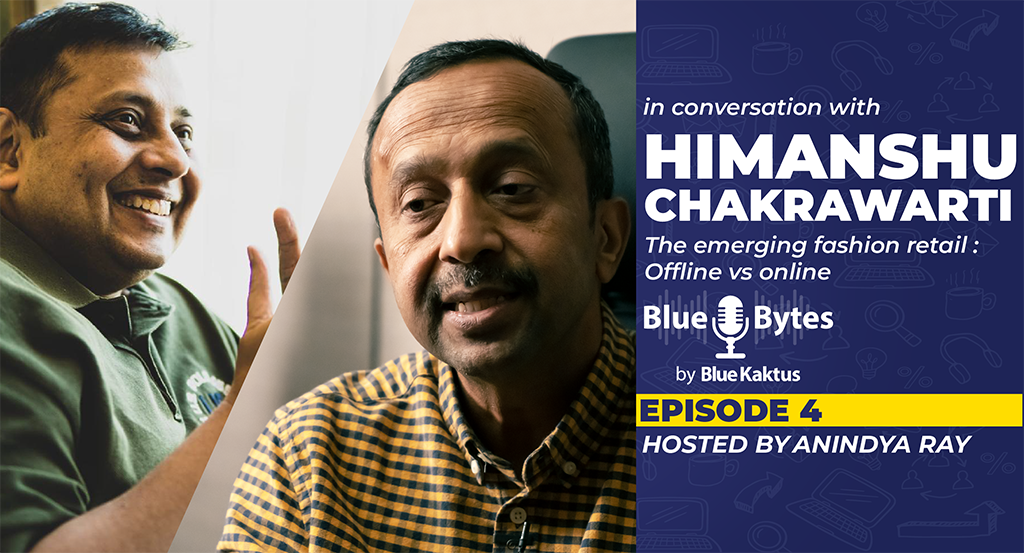


4 Comments
SonalJan 14, 2022 at 00:46 am
looking for Khadi manufacturing vendors for US market.
Rekha punshiSep 18, 2021 at 16:14 pm
Totally agree that khadi must be promoted as the best n most suitable fabric for India .. cool n breathable in summer n cosy n warm in winter ! I used khadi material for years , bought ready made kurtas from the emporiums Well written article !!!
Deepak PunshiSep 14, 2021 at 09:34 am
Thanks Sanjay….so enlightening the journey of khadi….?
Maj Gen Ranvir yadavSep 12, 2021 at 14:09 pm
Jai Hind Very interesting and informative article... Well done Sanjay